What’s happening at the Silicon Island in Penang?
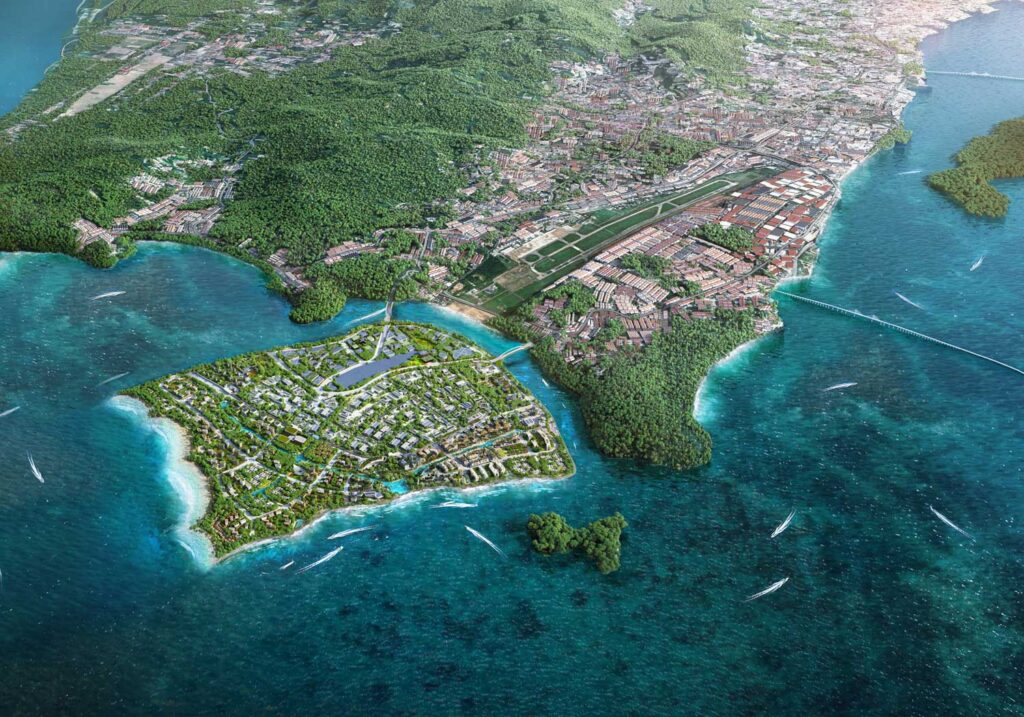
The long-awaited Penang’s Silicon Island reclamation began in September this year, following the Environment Management Plan (EMP) approval in July and early works to prepare the site.
Before the reclamation kicked off, preparatory work was carried out, such as setting up the Marine Operation Control Centre (MOCC) in Batu Maung.
The MOCC monitors activities around the Silicon Island’s reclamation site to ensure smooth and safe movements of vessels and prevent untoward incidents at sea during the reclamation.
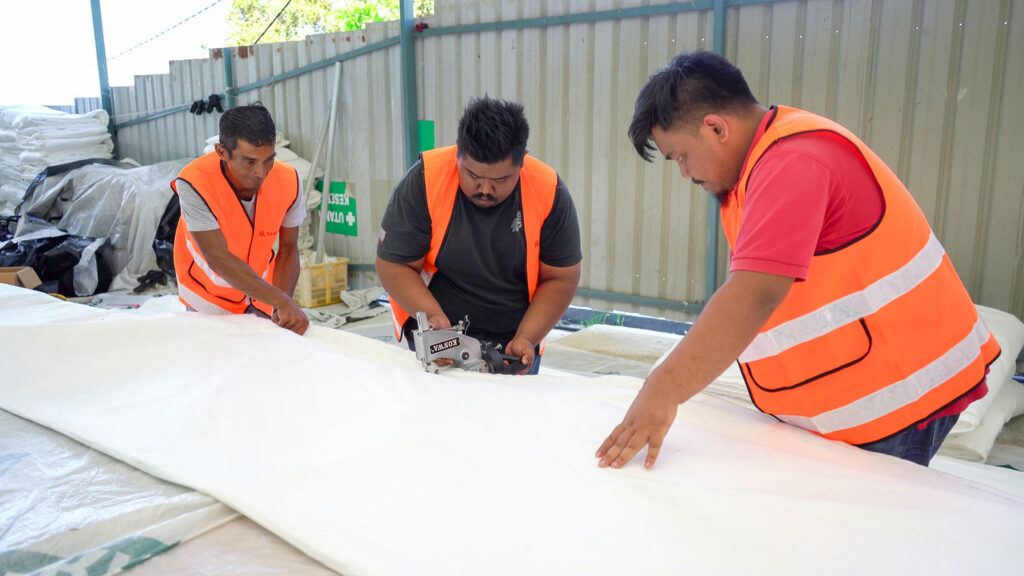
MOCC is also where the contractor’s loading bay is located and where general workers, who were hired among local community members, make silt curtains for the reclamation.
Site demarcation
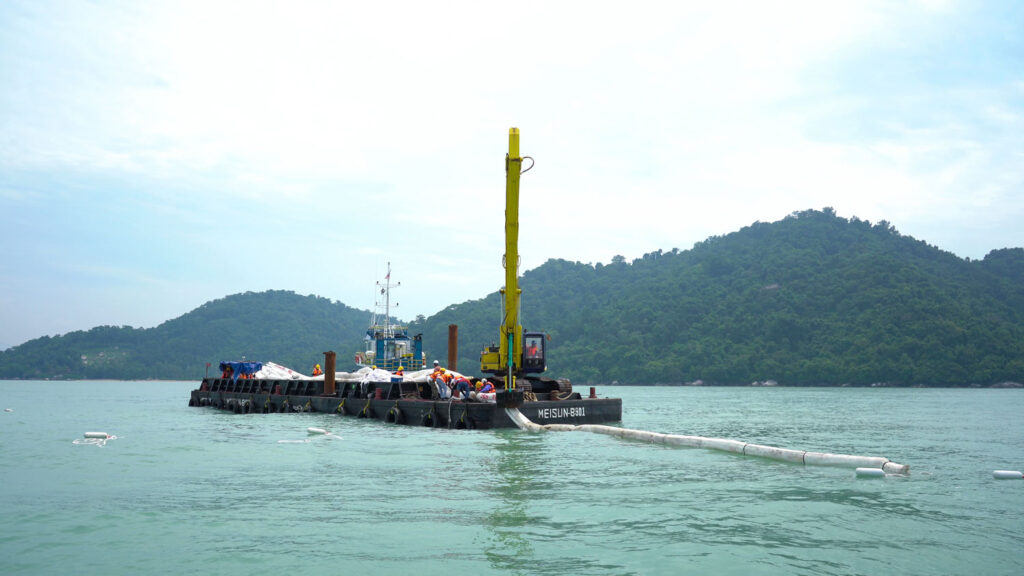
After the EMP was approved, marine buoys were installed to mark the reclamation area, followed by silt curtains that serve as screens to trap sediments and reduce turbidity during the sand-filling process.
Apart from being an environmental control measure to prevent pollution, the silt curtains also show the local fishermen clearly where the Silicon Island site is located so they can steer clear of the area when out at sea and continue their activities safely.
Sand containment bunds are also built to protect the area designated for sand-filling.
Sand dredging
The estimated reclamation volume for Silicon Island is 102,000,000 m3.
To obtain sand for the reclamation, two custom-built Trailing Suction Sand Dredgers (TSSD) are mobilised to extract sand by dredging in federal waters off Perak.
Dredging is the primary method to reclaim land from the sea, which involves removing sediment, sand and other materials from the seabed. Sand dredging activities for the Silicon Island have also obtained Environmental Impact Assessment (EIA) Report approval from the Environmental Department.
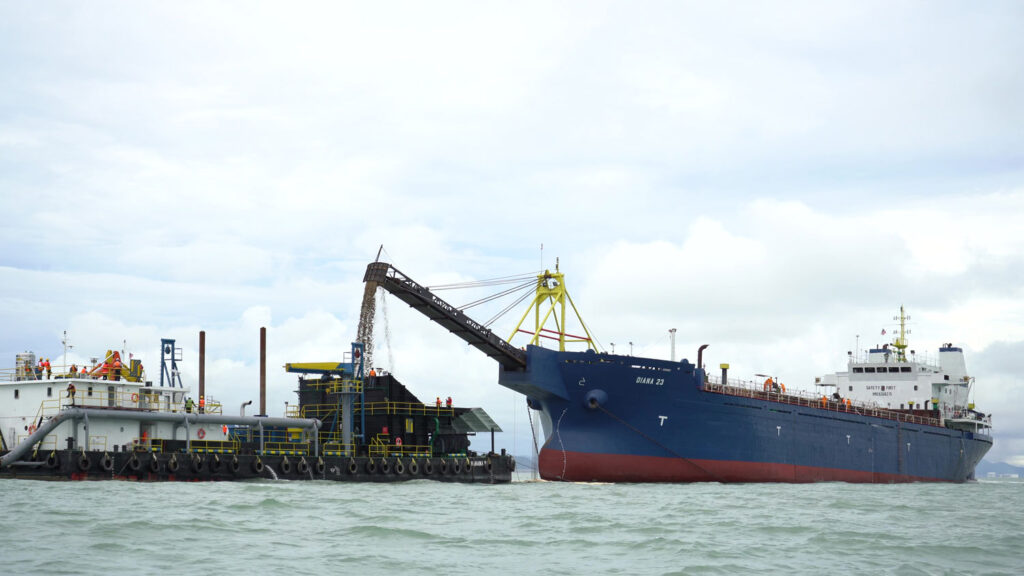
The Silicon Island project also uses two 3-in-1 dredgers (Carina 23 and Diana 23) to transport the sand from Perak to the reclamation site in Penang. When reclamation works peak, more 3-in-1 dredgers will be deployed for sand extraction and transfer to the site.
Once the sand carriers arrive in southern Penang waters, they transfer the sand onto the sand-rehandling station near Pulau Rimau, which is adjacent to the reclamation site. Silt curtains surround the sand-rehandling pontoon to prevent sand from dispersing into the surrounding waters.
The project also sources rocks from Pantai Remis, Perak.
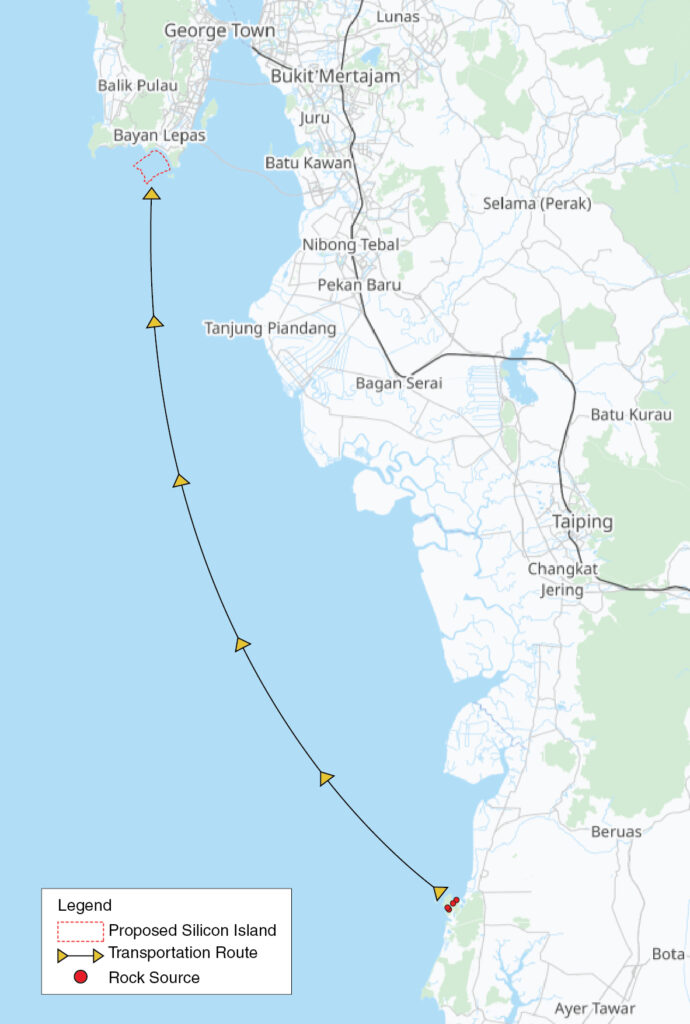

Reclaiming by parcel
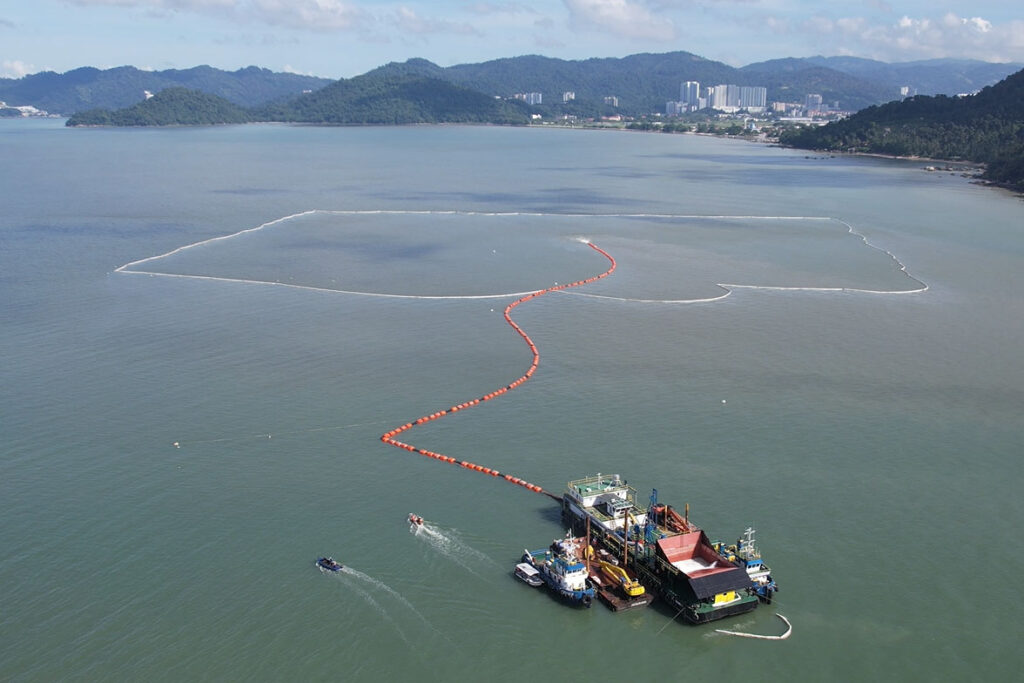
The Silicon Island is reclaimed by the parcel using the hydraulic sand fill method. The sand-rehandling station transfers sand to the reclamation site using a sand distribution pipe, which is partially afloat and on land.
The end of the pipe goes over the sand containment bund and pumps sand into the reclamation site in a measured and controlled manner.
As the reclamation proceeds parcel by parcel, the silt curtains, containment bunds, and sand distribution pipe will be extended for the sand-filling process.
Sand bunds, which are covered by sand-filled mattresses, are built along the site’s perimeter to serve as temporary construction access platforms and provide coastal protection.
When the reclaimed land is formed, the sand bunds also serve as a dry area for activities.
Continuous monitoring
During reclamation activities, the site is monitored continuously for environmental control, with strict measures implemented for air pollution, noise and vibration controls to comply with the Environmental Department’s requirements.
Turbidity monitoring devices are placed on-site to provide real-time monitoring around the clock. The devices send reports and alerts if turbidity exceeds permissible levels, prompting the construction team to take immediate remedial measures.
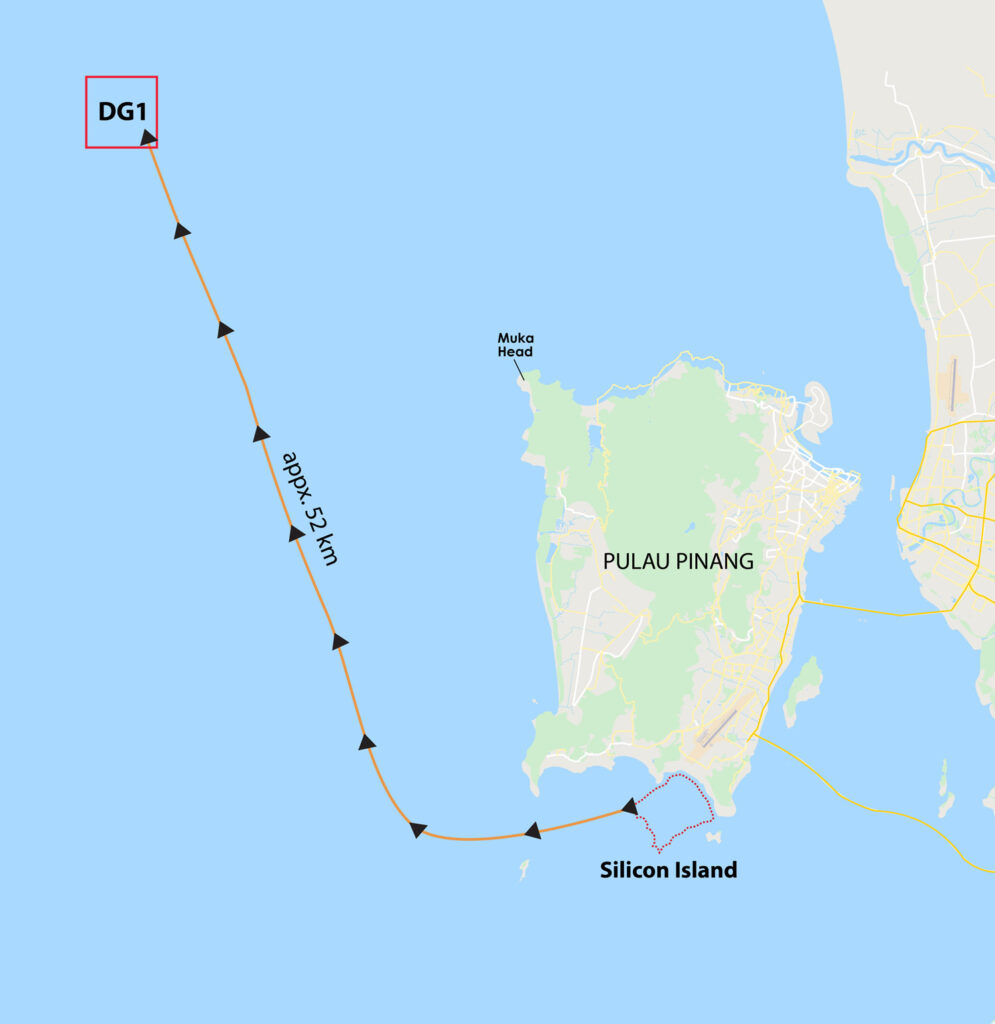
Dredged materials to be discarded are sent to a site north of Muka Head, which has been approved by the Marine Department. Vessels transporting the materials are tracked with a Dredging and Disposal Management System (DDMS) to ensure no illegal dumping.
Machinery and equipment used in reclamation and construction works are fitted with exhaust silencers and maintained in good working order to control noise impact, while working hours for noisy activities will be restricted from 7 a.m. to 7pm wherever applicable.
Open burning of wastes is prohibited, and if necessary, hoardings to serve as windscreens will be installed along construction areas to control potential impact on nearby residents.
Ground treatment
After the reclamation, the manmade land is compacted to form a treated and stable foundation to support proposed future developments and infrastructure.
In the ground treatment process, prefabricated vertical drains (PVDs) are inserted to draw excess water to aid the consolidation process and expedite the settlement time of the reclaimed land.
PVDs are typically used with other ground treatment techniques, such as surcharge loading, to enhance the consolidation process further and improve stability.
The surcharge is allowed to rest for the settlement period. Once the reclaimed land is settled and the required consolidation is achieved, the surcharge is removed or trimmed to the final platform level.
The perimeter containment is trimmed for a permanent rock revetment to be built for coastal protection, shielding the manmade island from the impact of waves, preventing erosion and maintaining the island’s stability.
The project will also feature eco-shorelines that support micro-habitats and promote marine biodiversity.
The reclamation of Silicon Island is targeted to be completed in 2032. The manmade island will open a new chapter in Penang’s quest to brand itself as a foremost global E&E manufacturer and a preferred location for international investments, trade, business services, tourism and leisure.
Watch the video to learn more about Silicon Island (formerly known as Penang South Island): https://www.youtube.com/watch?v=2k7Ok2nELg0

